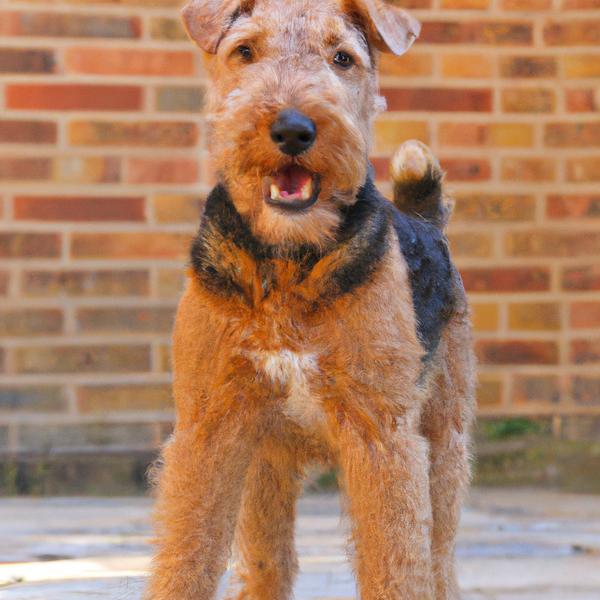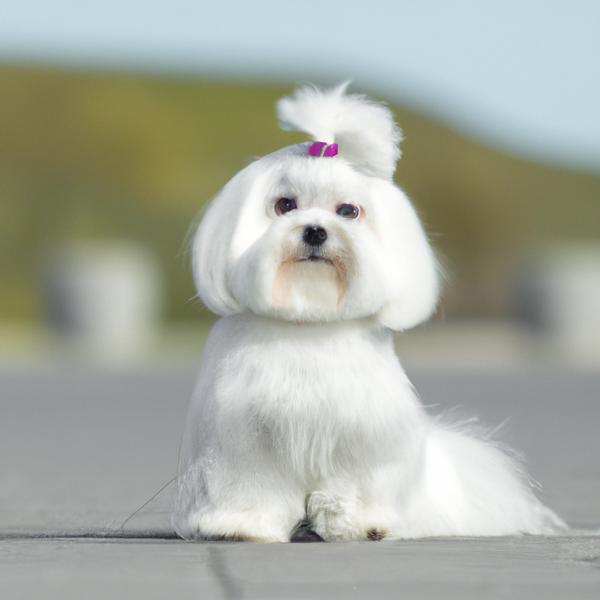Lakeland Terrier vs. Maltese: Breed Differences and Similarities
Weight Gain Potential
Which breed eats more: Lakeland Terrier or Maltese?
The Lakeland Terrier and Maltese breeds have an average risk of becoming obese. Daily walks and a balanced diet of quality dry dog food can help maintain a healthy weight. An active lifestyle and monitoring weight regularly is recommended.
Hypoallergenic
Are Lakeland Terriers or Malteses hypoallergenic, or neither?
Both Lakeland Terrier and Maltese are hypoallergenic dogs, which make them ideal pets for people who are allergic to pets. Although no dogs are completely hypoallergenic, these breeds come very close and are great choices for those who suffer from pet allergies.
Temperament
What are the personalities of Lakeland Terrier and Maltese dogs?
Independent
Confident
Intelligent
Bold
Friendly
Trainable
Active
Easygoing
Intelligent
Responsive
Docile
Gentle
Playful
Sweet
Tempered
Shedding Level
Do Lakeland Terriers shed more than Malteses, or which breed sheds more, Lakeland Terriers or Malteses?
Lakeland Terriers are moderate shedders, but regular brushing can reduce shedding and maintain coat health.
Malteses shed very little hair, making them a great choice for those who dislike excess hair in the house.
Watchdog Ability
Which dog breed makes a better watchdog, the Lakeland Terrier or Maltese?
The Lakeland Terrier and Maltese dogs are average watchdogs. If they sense something different, these breeds will alert their owner.
Origin
What is the origin of Lakeland Terrier and Maltese dog breeds?
England
Malta
Ancestry
What are the origins of Lakeland Terrier and Maltese breeds?
Old English Wirehaired Terriers, Bedlington Terriers
terrier
Breed recognition
Which kennel clubs recognize/register Lakeland Terrier and Maltese?
American Canine Registry
American Kennel Club
America's Pet Registry
Canadian Kennel Club
Dog Registry of America Inc.
Federation Cynologique Internationale
Kennel Club of Great Britain
North American Purebred Registry, Inc.
American Canine Association, Inc.
Australian National Kennel Council
Continental Kennel Club
New Zealand Kennel Club
Club Espanol De Terriers
American Canine Registry
American Kennel Club
America's Pet Registry
Canadian Kennel Club
Dog Registry of America Inc.
Federation Cynologique Internationale
Kennel Club of Great Britain
North American Purebred Registry, Inc.
American Canine Association, Inc.
Australian National Kennel Council
Continental Kennel Club
National Kennel Club
New Zealand Kennel Club
United Kennel Club
Date of Birth
When were Lakeland Terrier and Maltese breeds first developed?
1700s
ancient times
Breed Group
What is the Breed Group of Lakeland Terrier and Maltese?
Terrier (AKC:1934 & UKC)
Toy (AKC:1888)
Companion Breed & Show Breed (UKC)
Eye Color Possibilites
What are the eye colors of Lakeland Terrier and Maltese dogs?
Brown
Brown
Nose Color Possibilites
What are the natural nose colors of Lakeland Terrier and Maltese?
Black
Black
Coat Color Possibilites
What are the natural colors of the coat for Lakeland Terrier and Maltese breeds?
Black
Gray
Brown
Red
Cream
Fawn
Blue
Silver
Sable
Brindle
White
Coat Length
What is the typical coat length for Lakeland Terrier and Maltese breeds?
Lakeland Terriers have coats that can be either short or medium in length.
Malteses are known for their coat length.
Coat Density
What is the density of the coat of Lakeland Terrier and Maltese?
Coat Texture
What is the hair texture of Lakeland Terrier and Maltese?
Wiry
Straight
Litter Size
What is the usual litter size for Lakeland Terrier and Maltese?
A Lakeland Terrier can have a litter of 12-16 puppies on average. However, it's worth noting that the size of the litters can vary greatly. Factors that can influence litter size include the health of the mother, breeding history, and genetics.
A Maltese can have a litter of 15-18 puppies on average. However, it's worth noting that the size of the litters can vary greatly. Factors that can influence litter size include the health of the mother, breeding history, and genetics.
Adaptability
Lakeland Terriers have average adaptability to changes in lifestyle and living environments compared to other breeds.
Malteses are highly adaptable and versatile, making them excellent companions for families and individuals of all lifestyles.
Health Issues
Between Lakeland Terrier and Maltese, which breed is more prone to health problems?
Lakeland Terriers are susceptible to health issues like all breeds, so it's important to monitor their health and seek veterinary care when needed.
While the Maltese breed is generally healthy, occasional vet check-ups are still necessary to address any health concerns.
Major Concerns
What are the major health concerns for Lakeland Terrier and Maltese breeds?
Legg-Calve-Perthes Disease
Patent Ductus Arteriosus
Obesity
Minor Concerns
What minor health issues should be kept in mind when owning Lakeland Terrier and Maltese?
Patellar Luxation
Allergies
Eye Problems
Mono/Bilateral Cryptorchidism
Hydrocephalus
Dental Disease
Portosystemic Shunt
Shaker Dog Syndrome
Occasional Tests
What occasional tests are recommended for Lakeland Terrier and Maltese breeds?
Eye
Hips
X-Rays
Eye Examination
Physical Examination
Allergy Tests
Eye
Knee
Liver Ultrasound
CT Scan
Dental Examination
Physical Examination
Energy
How do the energy levels of Lakeland Terriers and Malteses compare?
Lakeland Terriers thrive on an active lifestyle due to their high-energy nature.
Malteses are suitable for those with a balanced lifestyle as they have an average energy level.
Social Needs
Lakeland Terrier vs Maltese social needs comparison
Lakeland Terrier has above average social needs and thrives with interaction with humans and other dogs.
Maltese has very high social needs and requires regular mental and physical stimulation, a job or purpose, and companionship.
Exercise Needed
Lakeland Terrier vs Maltese exercise need comparison.
Lakeland Terriers require significant physical activity and suit those with an active lifestyle.
Malteses require minimal physical activity for a healthy lifestyle.
Sleeping Need
Which of the two sleeps the most/least: Lakeland Terrier or Maltese?
Lakeland Terriers are active and require sufficient sleep to stay healthy.
Malteses have moderate energy levels and typical sleep patterns of 12-14 hours per day.
Drooling Tendency
Which drools more/less, Lakeland Terrier or Maltese?
The Lakeland Terrier and Maltese breeds are known for their low drooling tendencies, making them a suitable choice for people who don't want to deal with drool marks on their clothing.
Tendency to Bark
Do Lakeland Terriers or Malteses bark more/less frequently?
Lakeland Terriers bark moderately when necessary and may also bark due to certain triggers like fear, alarm, boredom, greeting, separation anxiety and compulsive barking.
Maltese dogs bark and howl frequently and are not recommended for quiet homes.
Territorial
Is the Lakeland Terrier or Maltese a better guard dog?
Lakeland Terrier dogs are highly protective and make excellent guard dogs due to their strong instinct to defend their territory and owners, and their high level of vigilance.
Maltese dogs have a strong protective nature and territorial instinct. They are highly vigilant and will fiercely defend their home and family.
Mouthiness
Mouthiness Comparison: Lakeland Terrier vs Maltese?
Roaming urge
Lakeland Terrier vs Labrador: Running away tendency?
Prey Drive
Lakeland Terrier or Maltese - which breed has a higher level of prey drive?
Past times
What are some enjoyable activities and ways to keep Lakeland Terrier and Maltese entertained?
Dog Parks
Walk, Cuddle, Sleep, Walking, Petting, Sniffing, Exploring, Playing, Running, Snuggle, Chasing, Wrestling, Being cute, Playdate, Go to Park, Frisbee, Swim, Chase, Bath time, Hide & Seek, Off-leash, Eating Snacks, Tag
Activity Level
Which breed has higher energy, Lakeland Terriers or Malteses?
Both Lakeland Terrier and Maltese are medium-energy dogs that enjoy socializing and playing with other dogs. They may engage in casual or sustained games of chase, and occasionally have bursts of barking or racing around the house.
Tolerance of being left alone
Walks per Week
How many miles should Lakeland Terrier or Maltese walk each week?
There's really no limit to how far you walk your dog as long as they're comfortable. For Lakeland Terrier, it's at least 9 miles / week. Just remember to build distance and stamina gradually over time.
There's really no limit to how far you walk your dog as long as they're comfortable. For Maltese, it's at least 6 miles / week. Just remember to build distance and stamina gradually over time.
Activity per Day
Do Lakeland Terriers or Malteses require more exercise?
In general most Lakeland Terriers usually need at least 45 minutes of exercise daily. This can be spread across the day and include all sorts of high-energy activities, like walking, running and playing.
In general most Malteses usually need at least 60 minutes of exercise daily. This can be spread across the day and include all sorts of high-energy activities, like walking, running and playing.
Grooming
Which breed is easier to maintain in terms of grooming, Lakeland Terriers or Malteses?
Lakeland Terriers have high grooming needs, requiring regular trims and professional grooming assistance to keep their coat healthy.
The Maltese requires an average amount of grooming compared to other breeds.
Brushing Frequency
What is the recommended brushing frequency for Lakeland Terrier and Maltese dogs?
Lakeland Terrier should be brushed at least once a week. Of course you can give them more frequent brushes if you find that they are still shedding a lot
Ideally, Maltese should be brushed at least 2 or 3 times a week (preferably daily) improve shedding.
Brushing Tools
What brushing tools are used for Lakeland Terriers and Malteses?
Slicker Brush
Deshedder
Clipper
Nail Clipper
Pin Brush
Dematter
Comb
Nail Clipper
Cups
How much food should be given to Lakeland Terrier or Maltese in cups?
For an average 15-17 pound (7 - 8 kg) Lakeland Terrier feed 1.3 cups daily. But, keep in mind, the amount you feed is going to be dependent on the quality of the food you are feeding.
For an average 4-7 pound (2 - 3 kg) Maltese feed 1 cups daily. But, keep in mind, the amount you feed is going to be dependent on the quality of the food you are feeding.
Daily Cost
Which breed has a higher daily cost, Lakeland Terrier or Maltese?
Lakeland Terrier and Maltese have a similar average daily cost of around $1.40 - $1.80.
Monthly Cost
Which breed has a higher monthly cost, Lakeland Terrier or Maltese?
When it comes to monthly expenses, both Lakeland Terrier and Maltese have a similar average cost, ranging from $42 - $53. This results in an average yearly cost of around $504 - $636.
Intelligence
Comparing Intelligence: Lakeland Terriers vs Malteses
Lakeland Terrier and Maltese have below-average obedience intelligence compared to other breeds. However, calling them "dumb dogs" is unjust. While Lakeland Terrier and Maltese lack obedience and working intelligence, they compensate for it with their remarkable ability to comprehend human emotions.
Sensitivity Level
How do Lakeland Terrier and Maltese compare in sensitivity?
Lakeland Terriers have average emotions and adapt well to different situations.
This breed is sensitive and requires gentle handling and a calm home environment.
Affection Dependance
Which is the more affectionate dog breed: Lakeland Terrier vs Maltese?
Apartment Friendly
Which breed is more apartment-friendly: Lakeland Terrier or Maltese?
The Lakeland Terrier is a great apartment dog, thriving with sufficient exercise and time outside as part of their daily routine.
Malteses make excellent apartment dogs, being fairly active indoors and not requiring a yard.
Child Friendly
Do Lakeland Terriers or Malteses have a friendlier temperament towards children?
Lakeland Terrier and Maltese are kid-friendly dogs. They are good with children and excellent dogs with children if they are socialized and trained at a young age.
Senior-friendly
Which dog is more suitable as a pet for the elderly - Lakeland Terrier or Maltese?
Cat Friendly
Do Lakeland Terrier or Maltese breeds have a better compatibility with cats?
Lakeland Terriers are not cat friendly.
Malteses are very friendly with cats and make great companions for them.
Dog Friendly
Which breed is more sociable with other dogs: Lakeland Terrier or Maltese?
Lakeland Terriers are not dog-friendly.
Malteses are generally very friendly towards other dogs, with a happy and affectionate temperament.
Pet friendly
How do Lakeland Terrier or Maltese dogs interact with other pets?
Stranger Friendly
Which breed is more friendly with strangers: Lakeland Terrier or Maltese?
Lakeland Terriers are friendly but may bark at strangers, and training is easy due to their intelligence.
Malteses are highly friendly around strangers.
Playfulness
Which breed is more playful between Lakeland Terrier and Maltese?
Lakeland Terriers are a playful breed that needs daily playtime to be happy.
Malteses have an average level of playfulness, enjoying playtime like most dogs but not excessively so.
Trainability
How do the trainability levels of Lakeland Terriers and Malteses compare?
Lakeland Terrier and Maltese dogs are usually easy to train, but may require consistency to fully obey commands.
Compare Lakeland Terrier with other breeds
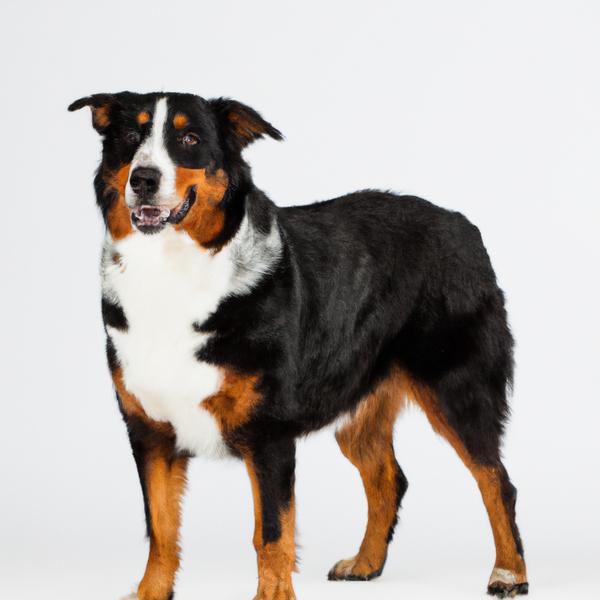
Bernese Cattle Dog
Lakeland Terrier vs Bernese Cattle Dog
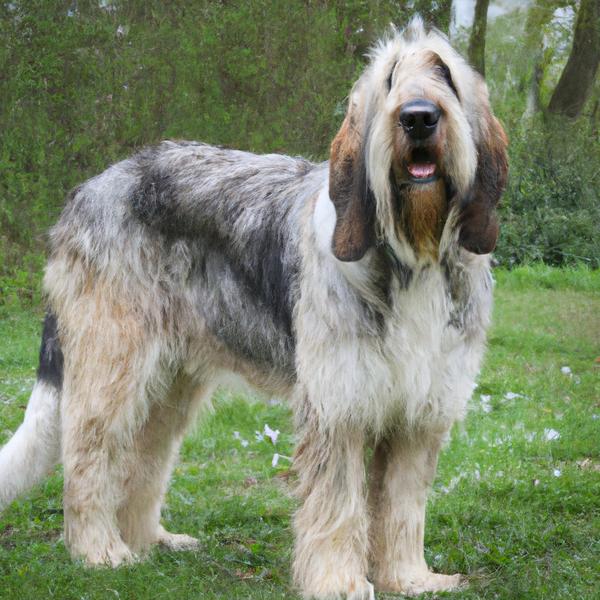
Grand Basset Griffon Vendeen
Lakeland Terrier vs Grand Basset Griffon Vendeen
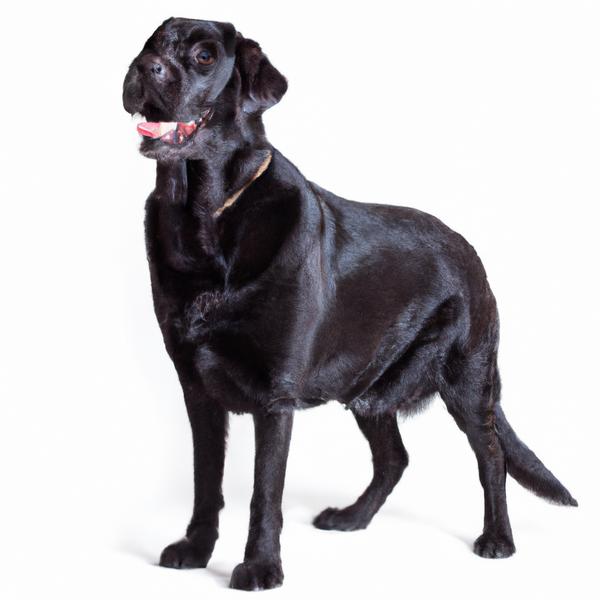
Labradinger
Lakeland Terrier vs Labradinger
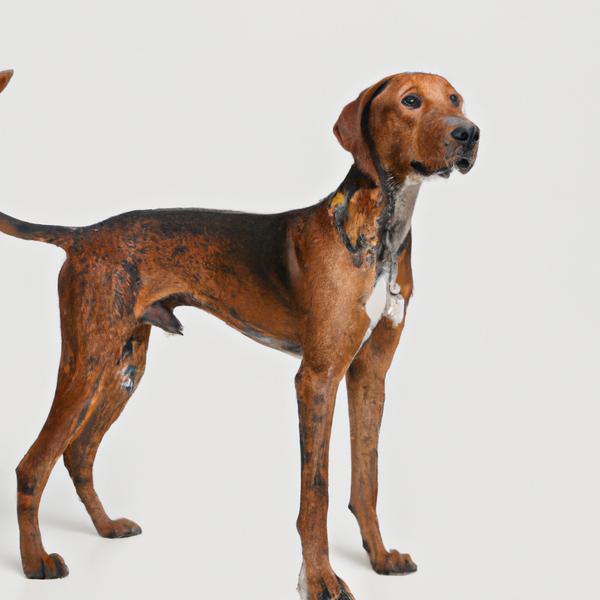
Pointer Bay
Lakeland Terrier vs Pointer Bay

Vizsla
Lakeland Terrier vs Vizsla
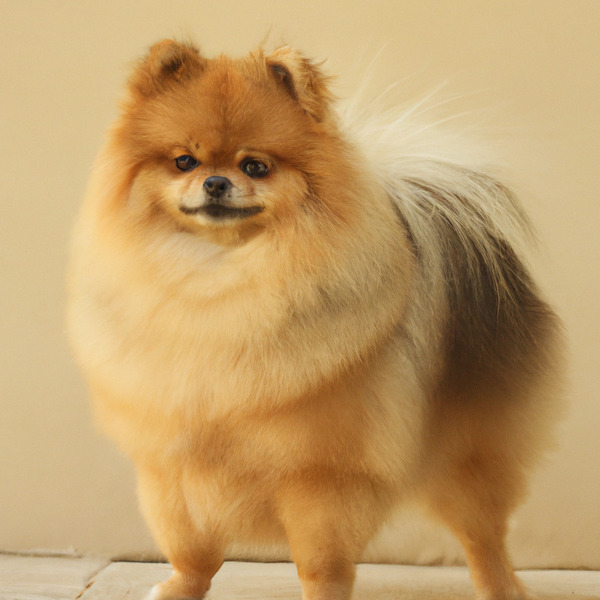
Pomeagle
Lakeland Terrier vs Pomeagle
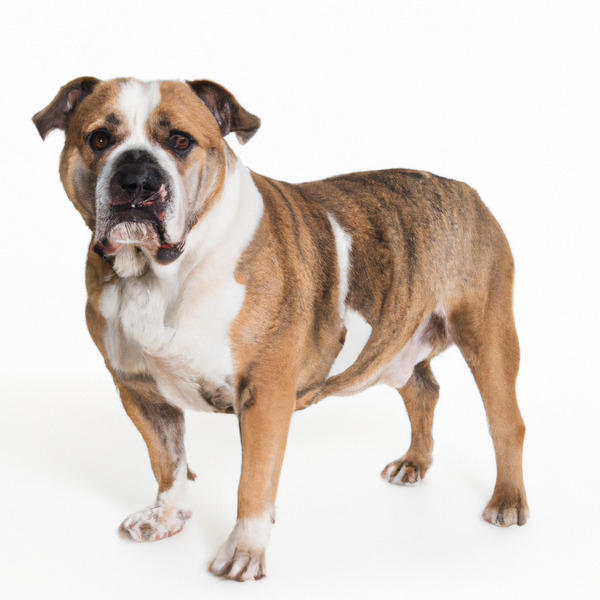
Olde English Bulldogge
Lakeland Terrier vs Olde English Bulldogge
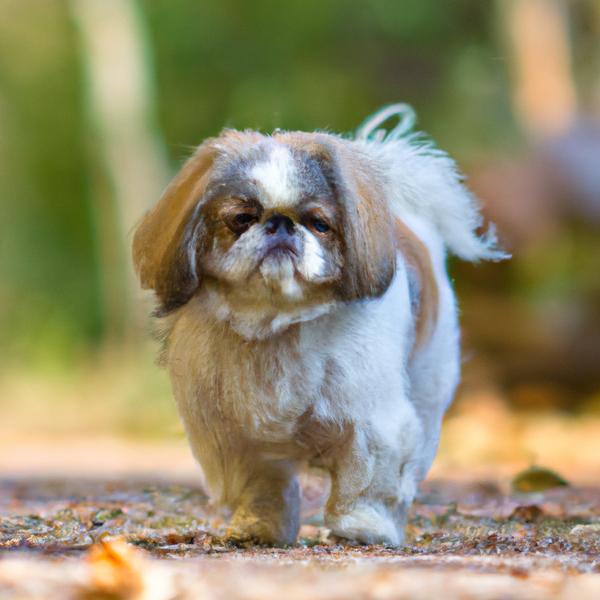
Cava-Chin
Lakeland Terrier vs Cava-Chin
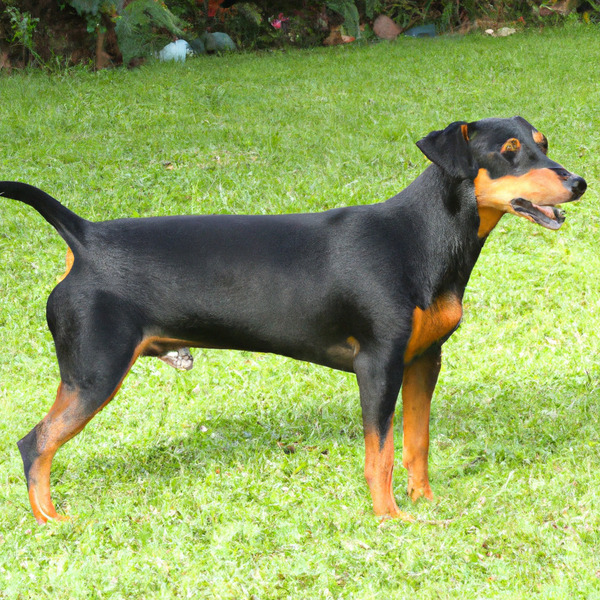
Decker Hunting Terrier
Lakeland Terrier vs Decker Hunting Terrier
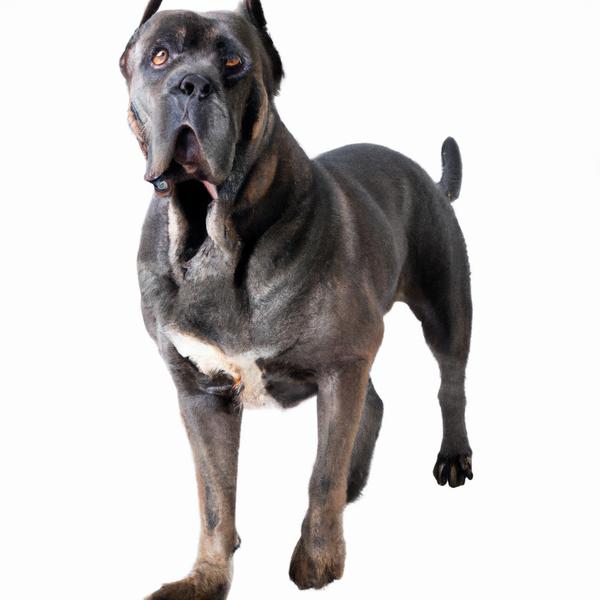
French Mastahoula
Lakeland Terrier vs French Mastahoula

Soft-Coated Wheaten Terrier
Lakeland Terrier vs Soft-Coated Wheaten Terrier
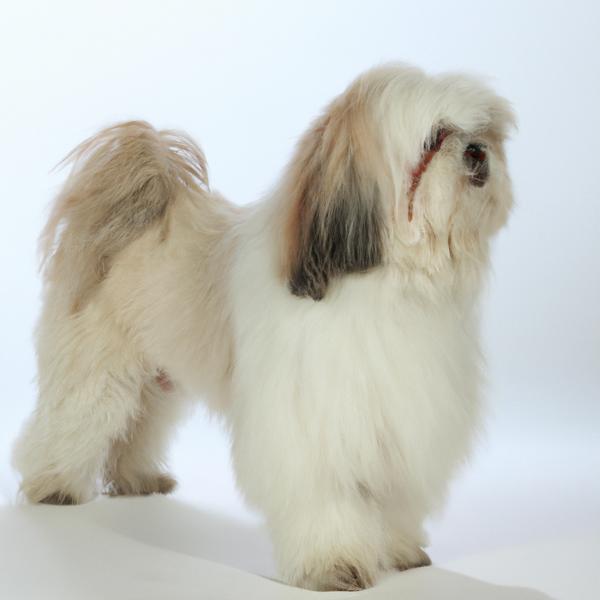
Coton Chin
Lakeland Terrier vs Coton Chin
